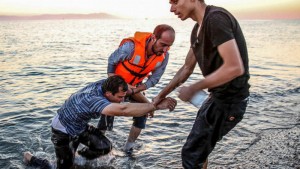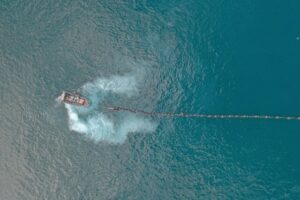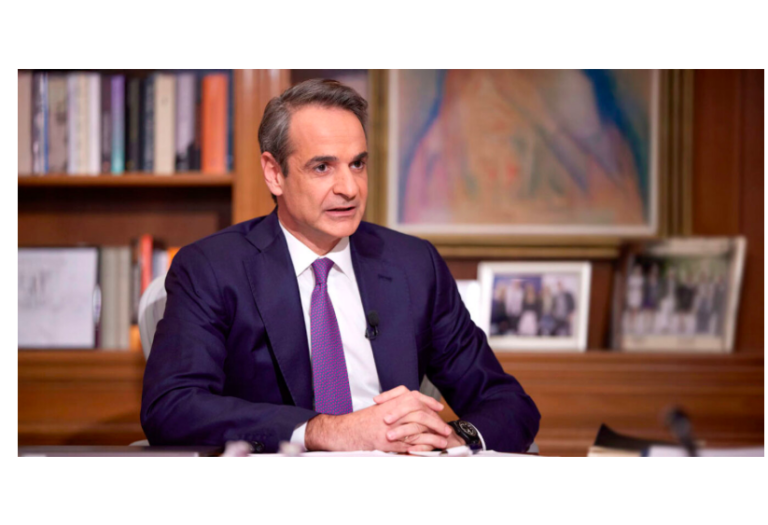With Turkey being one of the items on the agenda of the EU summit starting on Thursday (19 October), AFP is reporting that migrants are still coming to Greek islands despite the EU-Turkey deal to stem the arrival of refugees from Turkish territory.
Dozens of tents stud a hillside surrounded by olive trees, while children in flimsy sandals – the lucky ones wearing socks – play on mounds of stinking garbage as the sun rises on the Greek island of Samos.
Refugees in ‘deadlock’ on Greek islands as arrivals surge https://t.co/2cm4inXOlB pic.twitter.com/KCgltrXm21
— FRANCE 24 (@FRANCE24) October 19, 2017
Almost two years since more than a million migrants and refugees crossed into Europe, thousands are still living in squalor after risking their lives crossing the Aegean Sea. “We arrived last night, 42 of us on a small boat,” said Naween Rahimi, an Afghan from Kabul, who is travelling with his wife.
Spike in number of #refugees fleeing to #Greek islands https://t.co/RwFY7vpOug Arrivals on islands now at highest rate since March 2016. — Bruno Tersago (@BrunoTersago) September 26, 2017
“Some Chinese sold me a tent for 10 euros,” he said, adding that he had worked as an interpreter for the American military.
Nearly 300 Afghans, Syrians, Iraqis and Africans from various countries live in this makeshift camp – just a small fraction of a recent surge in migrants arriving from Turkey.
According to the United Nations refugee agency (UNHCR), 5,000 migrants arrived at Greek islands in September, an increase of 35% from the same period a year earlier, according to AFP calculations.
That is putting extra pressure on already overcrowded sites at a time when aid agencies are reducing their engagement on the ground.
The September figure compares to a total of 13,320 arrivals from January to 20 August, according to the International Organization for Migration.
The arrival rate of refugees in Greek islands is at its highest since March 2016, according to Save the Children. https://t.co/xzNE2u2Z5F
— Thomas Aagaard (@AaAagaard) October 3, 2017
The resurgence of migrants making the journey to Europe comes despite the EU deal with Turkey struck in March 2016, which drastically reduced the number of arrivals, and amid continuing political tensions between Ankara and Brussels. “I told the authorities I don’t want to stay here. I want to go to London, my uncle is there,” said Naween, looking for a second T-shirt to ward off the chill October air. “It’s so cold here. No shower. The situation is too bad.”
Why refugees on the Greek islands are facing another freezing winter:https://t.co/12V3aD936V — Jeff Crisp (@JFCrisp) October 6, 2017
‘We are in deadlock’
A hundred metres away from the makeshift camp, barbed wire surrounds the official reception centre of Samos which is overflowing with people.
There are just 700 places for more than 2,500 migrants, and journalists are banned from entering without permission.
“No toilets, no water, and the food is not good for the youngest,” said Saura, an Iraqi woman outside, pointing to her three shivering children, aged two to 10.
New arrivals travel to the centre each day to try to each get a 1.5-litre bottle of water and a portion of food, she said.
They were registered in early October, but their first interview with the Greek asylum service is not until 3 January.
As well as on Samos, 11,722 refugees are staying in reception centres on four other Greek islands (Lesbos, Kos, Chios and Leros), well beyond the total official capacity of just 5,576.
“We are in a deadlock. They have to move the refugees to the Greek mainland,” said Manos Logothetis, a medical coordinator at the Hellenic Centre for Disease Control and Prevention (Keelpno), while also emphasising the need to respect the asylum procedure.
On Monday, the Greek authorities started to transfer some of the most vulnerable categories of asylum seekers from Samos and other islands to camps or apartments on the mainland.
Refugees on Greek Islands 2017(Despite EU-Turkey deal) Life getting worse, no promised relocation from the EU.https://t.co/UvU3Y8cgeU pic.twitter.com/L3BzwpVQlK
— OneWorld Data (@OneworldData) October 4, 2017
‘Up to the Greek state’
“The conditions are actually very difficult… and it’s very hard for everybody,” said Erasmia Roumana, head of the UNHCR in Samos.
“It’s now up to the Greek state to manage the situation,” she said.
A number of NGOs who had operated on Samos since the start of the migrant crisis in 2015 have recently left, their financing dried up, said Bogdan Andrei, one of the coordinators of the refugee support centre on Samos.
“A political decision by the Greek authorities is necessary as soon as possible,” he said, warning of a potential disaster.
Some fear the recent rise in arrivals and overcrowding could fuel marginalisation and create tensions between the migrants and local communities.
“The state has abandoned us,” said a local grocer, Ilias Yannoulopoulos, who fears that with the oncoming winter cold and rain, “the refugees could revolt”.
Source: euractiv.com
Ask me anything
Explore related questions





